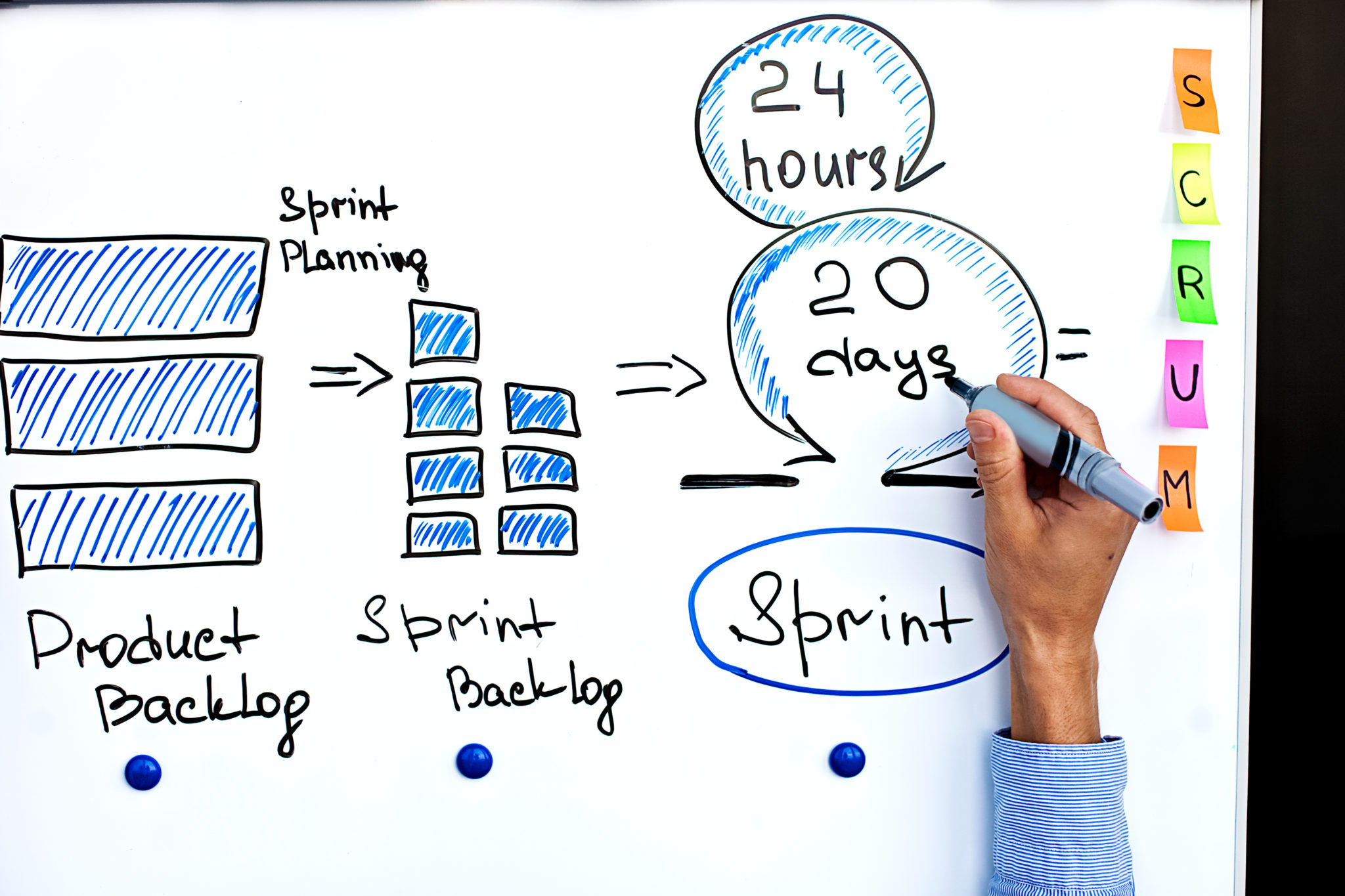“The Scrum Master is sick, he/she isn’t coming, but at least the daily is cancelled.”
“The Scrum Master didn’t tell me what I have to do.”
“The daily: 40 minutes wasted and I’ve got so much to do.”
“The Scrum Master is responsible for organizing and telling us how to do things.”
“This again? It came up in the past retro and nothing has changed.”
Do these phrases sound familiar to you? Have you ever heard or said them? We have certainly all heard them, and may even have uttered them ourselves at some point too.All of the above reflect frustration, ignorance, misunderstood needs, and poorly applied priorities, but above all, they reflect a failure to understand “WHY” we do what we do.
So what do we mean by Agility and Scrum?
Agility
In the context of this article, Agility is a change in mentality, a way of looking at the process of developing software (or any other product or service). Agility is fundamentally based on the 4 values and 12 principles of the “Agile Manifesto”.There is not much more to it than that, it is not rocket science – on the contrary, it is so simple and so “common sense”, even obvious, that it tempts and encourages us to start applying it immediately, and this may be the beginning of the end in applying Agility.
Scrum
Scrum is a framework that was created before the Agile Manifesto which has its own values, but at the same time also happens to align with the values and principles of the Agile Manifesto.Scrum can be a great tool, but also very dangerous when used incorrectly without understanding the reasons and the “whys” and “what fors” of the ceremonies, activities, roles and elements.
- Why hold the daily?
In short, the daily is for the team to meet up or find out the status of the work commitments assumed during the planning of the sprint. Interestingly, the idea of answering the question of “whether there are any blockers/inconveniences” is intended to eliminate any problems, just like how we control and monitor risks in Scrum- we do Risk Management daily. Another interesting fact is that in the daily there is no accountability to the Scrum Master- the Scrum Master is not the boss. If we were to speak in terms of accountability, we could say that the daily is a space where all team members are held accountable for their commitment to one another.
- Why hold the retro?
In the retro the team reviews the development process carried out in the last cycle, and with this decides which aspects of that process to improve and how to implement those improvements, and at the end of the day it is something they must do later. Using hindsight, all the team does is execute the famous Continuous Improvement Process: nothing more, nothing less. And, as it was once put, it is clear that “You cannot improve what you cannot understand”, and here again the importance of understanding the “whys” and “what fors” of the things we do becomes clear.
Tools
As you can see from these examples we talk about the continuous improvement process and risk management. Many times these definitions are not well understood or are not taken into account (and perhaps these labels are unnecessary), but these examples clearly reflect how important it is to understand why we do what we do. Understanding their true meanings greatly facilitates the correct execution and use of Scrum (and of anything, really).Just like Scrum, there are other tools, activities and best practices that follow the tenets of the Agile Manifesto, many of which are even older (eg Kanban), while others arose or were adapted from it (Jira, Trello, etc). However they will always be just that: tools. Their use is dependent exclusively on time and context: they are the tools that are being used today, but perhaps in 10 years they will have been replaced by other frameworks, methodologies, or tools.
How to be Agile
So, what does this mean? Is it wrong to use Jira, Trello, or other task management and assignment tools?Until we fully understand, should we stop holding daily meetings?Should we stop meeting once a month for retros?The answer is a resounding no: keep doing these things because they are extremely useful, but do them while bearing in mind that being agile is not the same as applying Scrum (or using any other tool). But keep going. Our recommendation is to always focus on the bases, following the 4 values and 12 principles of the Agile Manifesto.If we hold, for example, 3 daily meetings per week and no retros, does this mean we are not, and never will be, Agile?No, another resounding no. At most, you will not be following Scrum, as Scrum has specific requirements, but just as applying Scrum does not automatically make you “Agile”, not applying it does not automatically make you “not Agile”.
Applying Scrum does not automatically make you “Agile”, not applying it does not automatically make you “not Agile”.
How do I know if my organization is Agile?
It is very common for organizations to have doubts about whether they are Agile or not. To remedy this, we suggest going back to the source and asking yourself the following questions:
- Does doing this provide added value?
- Why do I do this? What value does it add?
- Does the team have the capacity to self manage or do we always need to be told what to do?
- Do we have the necessary skills to do the things we should?
- Do we proceed through cycle after cycle constantly adding value?
- From time to time do we reflect, analyze how we do things, and look to improve?
If you answered yes to these questions, carry on, you will not be using Scrum, you will not have the latest trendy management tool, and you will not cover a blackboard with post-its, but perhaps you are being Agile.So: is Scrum the Agility Assassin? Our verdict: yet another resounding no, of course not. It is definitely not the case, it was just an interesting title for our article.


About the Author
José Meyer is a talented Project Manager and very experienced in working with teams of diverse sizes and backgrounds. He has excellent planning and communication skills, and specializes in Agile Methodologies. José is a strong leader with a great work ethic.





